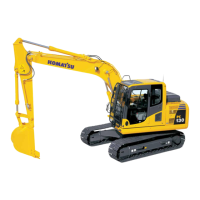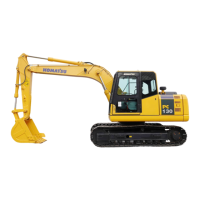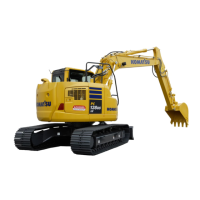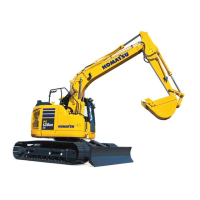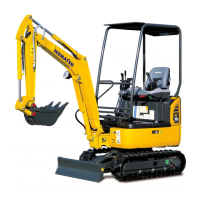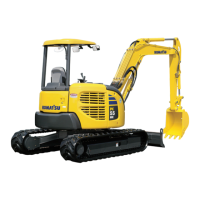2-92
PC130/150LGP-6K ENG
14.1 PRECAUTIONS FOR LOW TEMPERATURE
If the temperature becomes low, it becomes difficult to start the en-
gine, and the coolant may freeze, so do as follows.
14.1.1 FUEL AND LUBRICANTS
Change to fuel and oil with low viscosity for all components. For de-
tails of the specified viscosity, see "20. USE OF FUEL, COOLANT AND
LUBRICANTS ACCORDING TO AMBIENT TEMPERATURE".
14.1.2 COOLANT
Keep antifreeze fluid away from an open flame. Never smoke
when using antifreeze.
NOTICE
• Never use methanol, ethanol or propanol based antifreeze.
• Absolutely avoid using any water leak preventing agent irre-
spective of whether it is used independently or mixed with an
antifreeze.
• Do not mix one antifreeze with a different brand.
For details of the antifreeze mixture when changing the coolant, see
"24.2 WHEN REQUIRED".
Use a Permanent Antifreeze (ethylene glycol mixed with corrosion
inhibitor, antifoam agent, etc.) meeting the standard requirements as
shown below. With permanent antifreeze, no change of coolant is re-
quired for a year. If it is doubtful that an available antifreeze meets the
standard requirements, ask the supplier of that antifreeze for information.
Standard requirements for permanent antifreeze.
• SAE ........................................................................................J1034
• FEDERAL STANDARD ................................................... O-A-548D
REMARK
Where no permanent antifreeze is available, an ethylene glycol anti-
freeze without corrosion inhibitor may be used only for the cold season. In
this case, clean the cooling system twice a year (in spring and autumn).
When refilling the cooling system, add antifreeze in autumn, but do not
add any in spring.
14. COLD WEATHER OPERATION
WARNING
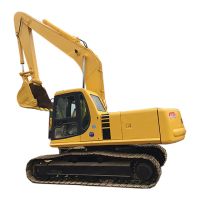
